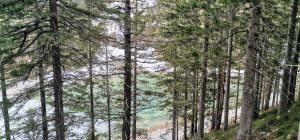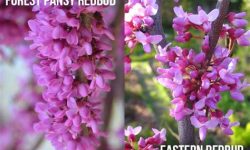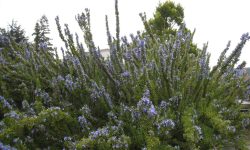Austrian Pine Vs White Pine
When it comes to choosing the right type of pine tree for your garden or landscape, the decision can be overwhelming. Two popular options to consider are the Austrian pine and the white pine. Each of these trees offers unique features and benefits, so understanding the differences between them is essential for making an informed choice. This blog post will explore the key characteristics of both the Austrian pine and white pine, providing guidance on how to differentiate between the two. Additionally, it will discuss the specific growing conditions required for each type of pine and compare the benefits and uses of both varieties. Whether you’re a seasoned gardener or a novice enthusiast, this guide will help you make the best decision for your outdoor space.
Introduction to Austrian Pine and White Pine
Austrian Pine and White Pine are two popular species of pine trees that are commonly found in various parts of the world. These two types of pines are well-known for their unique characteristics and benefits. Austrian Pine, also known as Pinus nigra, and White Pine, known as Pinus strobus, have distinct differences that set them apart from each other. Understanding the key features of each species is essential for anyone looking to learn more about these beautiful trees and their uses.
One of the main differences between Austrian Pine and White Pine is their appearance. Austrian Pine is known for its dark green to gray-green needles, while White Pine has soft, blue-green needles that are arranged in bundles of five. Additionally, Austrian Pine has a more spreading and irregular crown, while White Pine has a more uniform and conical shape.
Another important factor to consider when differentiating between Austrian Pine and White Pine is their growing conditions. Austrian Pine is well-suited for dry, rocky, and nutrient-poor soil, making it an excellent choice for landscapes with harsh conditions. On the other hand, White Pine thrives in well-drained, moist, and acidic soil, making it ideal for areas with more favorable environmental conditions.
Both Austrian Pine and White Pine have a range of benefits and uses, including their value as timber, landscaping, and ornamental purposes. Understanding the unique characteristics and growing requirements of each species is essential for anyone interested in incorporating these beautiful trees into their outdoor spaces.
Differentiating Features of Austrian Pine and White Pine
When differentiating between Austrian Pine and White Pine, one of the key features to look at is the needle structure. Austrian Pine needles are longer, typically measuring around 4 to 6 inches in length, and are twisted, giving them a unique appearance. On the other hand, White Pine needles are much shorter, usually ranging from 2 to 5 inches, and are typically softer to the touch. This difference in needle length and texture can help in easily identifying the two pine species.
Another distinguishing feature between the two pine varieties is their cone structure. Austrian Pine cones are oval-shaped and typically measure around 2 to 3 inches in length. They have a robust, sturdy appearance with thick scales. In contrast, White Pine cones are elongated, often reaching lengths of 4 to 8 inches, and have a slender, elegant shape with thin, flexible scales. These distinct differences in cone shape and size make it easier to differentiate between Austrian Pine and White Pine.
In addition to needle and cone structure, the bark of the two pine species also sets them apart. Austrian Pine bark is dark gray to black in color and is deeply furrowed, giving it a rugged, textured appearance. Conversely, White Pine bark is a light grayish-brown color and tends to be smoother with shallow furrows. By examining the bark texture and color, one can easily distinguish between Austrian Pine and White Pine trees.
Overall, understanding the differentiating features of Austrian Pine and White Pine, such as needle structure, cone characteristics, and bark appearance, can help individuals accurately identify and appreciate these two distinct pine species in their natural environment.
Growing Conditions for Austrian Pine and White Pine
Austrian Pine and White Pine are both popular choices for landscaping and are known for their resilience and beauty. However, in order to ensure that these trees thrive, it is essential to understand their specific growing conditions.
For Austrian Pine, it thrives in full sun and well-drained soil. It is tolerant of a wide range of soil types, including sandy, loamy, or clay soils, but it prefers slightly acidic soil. This type of pine is also drought-tolerant once established, making it an excellent choice for areas with limited rainfall.
On the other hand, White Pine prefers a slightly different environment. It also thrives in full sun, but it requires moist, well-drained soil. This tree prefers slightly acidic to neutral soil and does not tolerate dry or compacted soil well.
Both trees are sensitive to pollution and should be planted away from areas with heavy traffic or industrial pollution. Additionally, it’s important to provide adequate space for these trees to grow, as they both have a large, spreading root system.
Comparing the Benefits and Uses of Austrian Pine and White Pine
Austrian Pine and White Pine are two popular species of pine trees with distinct characteristics and uses. Both of these trees have unique benefits and can be utilized in various ways.
Firstly, Austrian Pine is known for its high resistance to diseases and pests, making it a low-maintenance option for landscaping and forestry. On the other hand, White Pine is valued for its fast growth, making it a popular choice for reforestation and windbreaks.
Secondly, Austrian Pine is often used for timber production due to its strong and durable wood, making it suitable for construction and carpentry. Meanwhile, White Pine is commonly used for furniture and interior paneling due to its light and smooth texture.
Overall, both Austrian Pine and White Pine offer unique benefits and uses, making them valuable additions to any landscape or forestry project.
Frequently Asked Questions
What is the Austrian Pine and White Pine?
Austrian Pine and White Pine are both species of pine trees commonly found in North America. They are known for their distinctive characteristics and adaptability to various growing conditions.
How can you differentiate between Austrian Pine and White Pine?
Austrian Pine trees have dark green needles and large, woody cones, while White Pine trees have soft, flexible needles and slender cones. Additionally, the bark of Austrian Pine is dark and deeply furrowed, whereas White Pine has a pale, smooth bark.
What are the ideal growing conditions for Austrian Pine and White Pine?
Austrian Pine thrives in full sun and well-drained soil, while White Pine prefers partial shade and moist, well-drained soil. Both species are relatively low-maintenance once established.
What are the benefits of Austrian Pine and White Pine?
Austrian Pine is valued for its tolerance to urban conditions and drought, making it a popular choice for landscaping. White Pine is prized for its soft, lightweight wood and is often used in construction and woodworking.
What are the uses of Austrian Pine and White Pine?
Austrian Pine is commonly used for windbreaks, erosion control, and as a timber source. White Pine is used for furniture, paneling, and as a Christmas tree due to its soft needles and pleasant scent.
How do Austrian Pine and White Pine contribute to the environment?
Both Austrian Pine and White Pine provide habitat and food for wildlife, help prevent soil erosion, and contribute to the overall biodiversity of their ecosystems.
Which is better for landscaping, Austrian Pine or White Pine?
The choice between Austrian Pine and White Pine for landscaping depends on the specific growing conditions, desired aesthetic, and intended use. Both species have their own unique benefits and features to consider.





